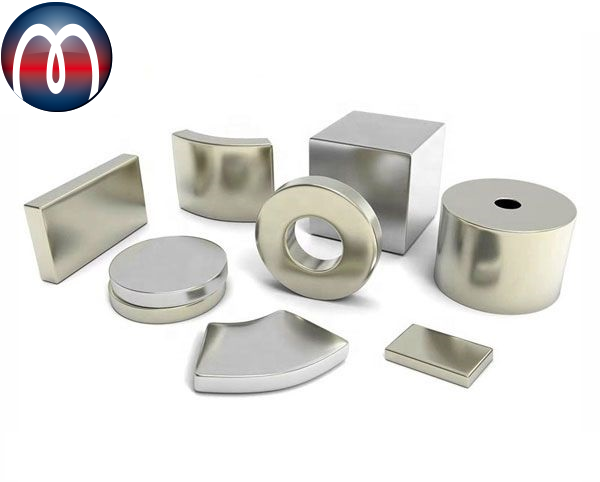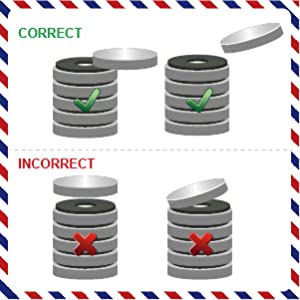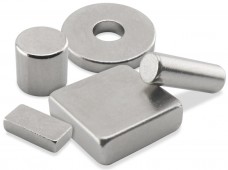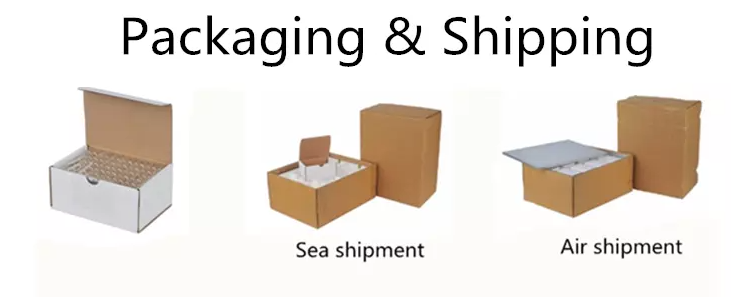 Strong Neodymium Magnets and Permanent Magnets
Strong Neodymium Magnets and Permanent Magnets
Strong Rare Earth Neodymium Magnets - Leading Supplier of Magnets in UK, Germany, Europe. Vast selection of super strong permanent rare earth neodymium magnets at low prices.
We pride ourselves on offering a vast selection of high-quality, super-strong premanent rare earth neodymium magnets at unbeatable prices. Whether you're searching for disc magnets, cylinder magnets, or block magnets, our extensive inventory is sure to meet your neodymium needs. Our Grade N52 magnets are particularly popular for their exceptional strength, making them ideal for industrial applications and hobby projects alike. With fast shipping and outstanding customer support, we ensure that you receive your magnets quickly and have the assistance you need to choose the right product for your project.
Sintered neodymium magnet is the strongest magnetic material commercially available today. It is largely made of alloy of neodymium, iron and boron, and the chemical formula is Nd2Fe14B. Sintered NdFeB neodymium magnet exhibits high magnetic energy product in small size with high coercive forces. Examples of applications include permanent magnet motors, loudspeakers, magnetic separators, wind power generators, computer hard drive, and MRI devices.
We call neodymium magnets in different names. The below listed most names of it. Neodymium, rare earth magnets, earth magnets, permanent magnets and neodymium.
Neodymium-iron-boron magnet is one kind of the permanent rare earth magnet. It is also called rare earth magnet and neodymium magnet.
Sintered Neodymium-iron-boron (neodymium), known as the third generation of rare earth permanent magnet, is made from Nd, Fe, B as well as few of other elements like Dy, Tb, Co, Nb, Ga, Al, Cu, etc.
Grade of Magnet
The Grade of a magnet generally indicates how “strong” a magnet material is, which is measured by the Maximum Energy Product. The energy product is commonly specified in units of Gauss Oersted. The higher the grade the “stronger” the magnet. The grade also tells the temperature rating of a magnet material. Neodymium magnets have different heat tolerances which determine their maximum working temperature. As the heat tolerance increases the maximum available flux density decreases.
As Neodymium magnet is prone to corrosion, it is usually preferable for the magnet to be coated for protection. Among a variety of options for coatings, nickel and nickel-copper-nickel are the most commonly used, making the magnet more corrosion resistant and durable.
Magnet Online Shop - Strong Magnets from Magnosphere
Where can you buy good, strong magnets? We answer all questions about strong permanent magnets competently. What is the plural of magnet? Magnet or magnets? Our Magnetshop has been serving the magnet community in providing stock & custom magnets for a wide range of industrial, commercial, technical & consumer applications to customers across the globe. We always carry a large inventory of permanent magnets; Neodymium Magnets, Ferrite Magnets, Samarium-Cobalt (SmCo), & Alnico Magnets AlNiCo available from stock for immediate shipment in a wide range of shapes, sizes & grades. We provide solutions for top companies in the world!
Description of magnetic materials
A magnet is a material or object that produces a magnetic field. This magnetic field is invisible but is responsible for the most notable property of a magnet: a force that pulls on other ferromagnetic materials, such as iron, steel, nickel, cobalt, etc. and attracts or repels other magnets. A permanent magnet is an object made from a material that is magnetized and creates its own persistent magnetic field. An everyday example is a refrigerator magnet used to hold notes on a refrigerator door. Materials that can be magnetized, which are also the ones that are strongly attracted to a magnet, are called ferromagnetic (or ferrimagnetic). These include the elements iron, nickel and cobalt and their alloys, some alloys of rare-earth metals, and some naturally occurring minerals such as lodestone. Although ferromagnetic (and ferrimagnetic) materials are the only ones attracted to a magnet strongly enough to be commonly considered magnetic, all other substances respond weakly to a magnetic field, by one of several other types of magnetism. Ferromagnetic materials can be divided into magnetically "soft" materials like annealed iron, which can be magnetized but do not tend to stay magnetized, and magnetically "hard" materials, which do. Permanent magnets are made from "hard" ferromagnetic materials such as alnico and ferrite that are subjected to special processing in a strong magnetic field during manufacture to align their internal microcrystalline structure, making them very hard to demagnetize. To demagnetize a saturated magnet, a certain magnetic field must be applied, and this threshold depends on coercivity of the respective material. "Hard" materials have high coercivity, whereas "soft" materials have low coercivity. The overall strength of a magnet is measured by its magnetic moment or, alternatively, the total magnetic flux it produces. The local strength of magnetism in a material is measured by its magnetization. An electromagnet is made from a coil of wire that acts as a magnet when an electric current passes through it but stops being a magnet when the current stops. Often, the coil is wrapped around a core of "soft" ferromagnetic material such as mild steel, which greatly enhances the magnetic field produced by the coil.
Magnets can be delivered magnetized and un-magnetized. Some production methods require the magnets being incorporated into assemblies in a un-magnetized state and magnetized later once the assembly is completed. There are various magnetic orientations available for different shapes of magnets.
Permanent magnet
Magnetic metallic elements
Many materials have unpaired electron spins, and the majority of these materials are paramagnetic. When the spins interact with each other in such a way that the spins align spontaneously, the materials are called ferromagnetic (what is often loosely termed as magnetic). Because of the way their regular crystalline causes their spins to interact, some metals are ferromagnetic when found in their natural states, as ores. These include iron ore magnetite or lodestone cobalt nickel, as well as the rare earth metals gadolinium and dysprosium (when at a very low temperature). Such naturally occurring ferromagnets were used in the first experiments with magnetism. Technology has since expanded the availability of magnetic materials to include various man-made products, all based, however, on naturally magnetic elements.
Permanent Magnet Comparsion Charts: Click here to download
Composites
Ceramic, or ferrite, magnets are made of a sintered composite of powdered iron oxide and barium/strontium carbonate ceramic. Given the low cost of the materials and manufacturing methods, inexpensive magnets (or non-magnetized ferromagnetic cores, for use in electronic components such as portable AM radio antennas) of various shapes can be easily mass-produced. The resulting magnets are non-corroding but brittle and must be treated like other ceramics. Alnico magnets are made by casting or sintering a combination of aluminium, nickel and cobalt with iron and small amounts of other elements added to enhance the properties of the magnet. Sintering offers superior mechanical characteristics, whereas casting delivers higher magnetic fields and allows for the design of intricate shapes. Alnico magnets resist corrosion and have physical properties more forgiving than ferrite, but not quite as desirable as a metal. Trade names for alloys in this family include: Alni, Alcomax, Hycomax, Columax, and Ticonal. Injection-molded magnets are a composite of various types of resin and magnetic powders, allowing parts of complex shapes to be manufactured by injection molding. The physical and magnetic properties of the product depend on the raw materials, but are generally lower in magnetic strength and resemble plastics in their physical properties. Flexible magnets are composed of a high-coercivity ferromagnetic compound (usually ferric oxide) mixed with a plastic binder. This is extruded as a sheet and passed over a line of powerful cylindrical permanent magnets. These magnets are arranged in a stack with alternating magnetic poles facing up (N, S, N, S...) on a rotating shaft. This impresses the plastic sheet with the magnetic poles in an alternating line format. No electromagnetism is used to generate the magnets. The pole-to-pole distance is on the order of 5 mm, but varies with manufacturer. These magnets are lower in magnetic strength but can be very flexible, depending on the binder used.
Rare-earth magnets
Rare earth (lanthanoid) elements have a partially occupied f electron shell (which can accommodate up to 14 electrons). The spin of these electrons can be aligned, resulting in very strong magnetic fields, and therefore, these elements are used in compact high-strength magnets where their higher price is not a concern. The most common types of rare-earth magnets are samarium–cobalt and neodymium–iron–boron (NIB) magnets.
Single-molecule magnets (SMMs) and single-chain magnets (SCMs)
In the 1990s, it was discovered that certain molecules containing paramagnetic metal ions are capable of storing a magnetic moment at very low temperatures. These are very different from conventional magnets that store information at a magnetic domain level and theoretically could provide a far denser storage medium than conventional magnets. In this direction, research on monolayers of SMMs is currently under way. Very briefly, the two main attributes of an SMM are:
- a large ground state spin value (S), which is provided by ferromagnetic or ferrimagnetic coupling between the paramagnetic metal centres
- a negative value of the anisotropy of the zero field splitting (D)
Most SMMs contain manganese but can also be found with vanadium, iron, nickel and cobalt clusters. More recently, it has been found that some chain systems can also display a magnetization that persists for long times at higher temperatures. These systems have been called single-chain magnets.
Nano-structured magnets
Some nano-structured materials exhibit energy waves, called magnons, that coalesce into a common ground state in the manner of a Bose–Einstein condensate.
Rare-earth-free permanent magnets
The United States Department of Energy has identified a need to find substitutes for rare-earth metals in permanent-magnet technology, and has begun funding such research. The Advanced Research Projects Agency-Energy (ARPA-E) has sponsored a Rare Earth Alternatives in Critical Technologies (REACT) program to develop alternative materials. In 2011, ARPA-E awarded 31.6 million dollars to fund Rare-Earth Substitute projects.
Costs
The current cheapest permanent magnets, allowing for field strengths, are flexible and ceramic magnets, but these are also among the weakest types. The ferrite magnets are mainly low-cost magnets since they are made from cheap raw materials: iron oxide and Ba- or Sr-carbonate. However, a new low cost magnet, Mn–Al alloy, has been developed and is now dominating the low-cost magnets field. It has a higher saturation magnetization than the ferrite magnets. It also has more favorable temperature coefficients, although it can be thermally unstable. Neodymium–iron–boron (NIB) magnets are among the strongest. These cost more per kilogram than most other magnetic materials but, owing to their intense field, are smaller and cheaper in many applications.
Temperature
Temperature sensitivity varies, but when a magnet is heated to a temperature known as the Curie point, it loses all of its magnetism, even after cooling below that temperature. The magnets can often be remagnetized, however. Additionally, some magnets are brittle and can fracture at high temperatures. The maximum usable temperature is highest for alnico magnets at over 540 °C (1,000 °F), around 300 °C (570 °F) for ferrite and SmCo, about 140 °C (280 °F) for NIB and lower for flexible ceramics, but the exact numbers depend on the grade of material.
Units and calculations
For most engineering applications, MKS (rationalized) or SI (Système International) units are commonly used. Two other sets of units, Gaussian and CGS-EMU, are the same for magnetic properties and are commonly used in physics.
In all units, it is convenient to employ two types of magnetic field, B and H, as well as the magnetization M, defined as the magnetic moment per unit volume.
- The magnetic induction field B is given in SI units of teslas (T). B is the magnetic field whose time variation produces, by Faraday's Law, circulating electric fields (which the power companies sell). B also produces a deflection force on moving charged particles (as in TV tubes). The tesla is equivalent to the magnetic flux (in webers) per unit area (in meters squared), thus giving B the unit of a flux density. In CGS, the unit of B is the gauss (G). One tesla equals 104 G.
- The magnetic field H is given in SI units of ampere-turns per meter (A-turn/m). The turns appear because when H is produced by a current-carrying wire, its value is proportional to the number of turns of that wire. In CGS, the unit of H is the oersted (Oe). One A-turn/m equals 4π×10−3 Oe.
- The magnetization M is given in SI units of amperes per meter (A/m). In CGS, the unit of M is the oersted (Oe). One A/m equals 10−3 emu/cm3. A good permanent magnet can have a magnetization as large as a million amperes per meter.
- In SI units, the relation B = μ0(H + M) holds, where μ0 is the permeability of space, which equals 4π×10−7 T•m/A. In CGS, it is written as B = H + 4πM. (The pole approach gives μ0H in SI units. A μ0M term in SI must then supplement this μ0H to give the correct field within B, the magnet. It will agree with the field B calculated using Ampèrian currents).
Materials that are not permanent magnets usually satisfy the relation M = χH in SI, where χ is the (dimensionless) magnetic susceptibility. Most non-magnetic materials have a relatively small χ (on the order of a millionth), but soft magnets can have χ on the order of hundreds or thousands. For materials satisfying M = χH, we can also write B = μ0(1 + χ)H = μ0μrH = μH, where μr = 1 + χ is the (dimensionless) relative permeability and μ =μ0μr is the magnetic permeability. Both hard and soft magnets have a more complex, history-dependent, behavior described by what are called hysteresis loops, which give either B vs. H or M vs. H. In CGS, M = χH, but χSI = 4πχCGS, and μ = μr.
Caution: in part because there are not enough Roman and Greek symbols, there is no commonly agreed-upon symbol for magnetic pole strength and magnetic moment. The symbol m has been used for both pole strength (unit A•m, where here the upright m is for meter) and for magnetic moment (unit A•m2). The symbol μ has been used in some texts for magnetic permeability and in other texts for magnetic moment. We will use μ for magnetic permeability and m for magnetic moment. For pole strength, we will employ qm. For a bar magnet of cross-section A with uniform magnetization M along its axis, the pole strength is given by qm = MA, so that M can be thought of as a pole strength per unit area.
Fields of a magnet
Far away from a magnet, the magnetic field created by that magnet is almost always described (to a good approximation) by a dipole field characterized by its total magnetic moment. This is true regardless of the shape of the magnet, so long as the magnetic moment is non-zero. One characteristic of a dipole field is that the strength of the field falls off inversely with the cube of the distance from the magnet's center. Closer to the magnet, the magnetic field becomes more complicated and more dependent on the detailed shape and magnetization of the magnet. Formally, the field can be expressed as a multipole expansion: A dipole field, plus a quadrupole field, plus an octupole field, etc. At close range, many different fields are possible. For example, for a long, skinny bar magnet with its north pole at one end and south pole at the other, the magnetic field near either end falls off inversely with the square of the distance from that pole.
Electromagnets
An electromagnet, in its simplest form, is a wire that has been coiled into one or more loops, known as a solenoid. When electric current flows through the wire, a magnetic field is generated. It is concentrated near (and especially inside) the coil, and its field lines are very similar to those of a magnet. The orientation of this effective magnet is determined by the right hand rule. The magnetic moment and the magnetic field of the electromagnet are proportional to the number of loops of wire, to the cross-section of each loop, and to the current passing through the wire. If the coil of wire is wrapped around a material with no special magnetic properties (e.g., cardboard), it will tend to generate a very weak field. However, if it is wrapped around a soft ferromagnetic material, such as an iron nail, then the net field produced can result in a several hundred- to thousandfold increase of field strength. Uses for electromagnets include particle accelerators, electric motors, junkyard cranes, and magnetic resonance imaging machines. Some applications involve configurations more than a simple magnetic dipole; for example, quadrupole and sextupole magnets are used to focus particle beams.
How to Safely Seperate Your Magnosphere Magnets?

CORRECT
- Slide one magnet off the top of the stack.
- Once off thestack,carefully start lifting the magnet.
- Lift the magnet to free it from the stack.
INCORRECT
- DO NOT attempt to pull, lift, or pry amagnet from the stack before sliding it to the side.
- DO NOT throw away the white storage spacers.
- DO NOT allow the magnets to snap to each other or any magnetic surface. doing so may cause magnets to break!
 NdFeB
NdFeB
Neodymium Iron Boron (NdFeB) magnets are a type of rare earth alloy with typical atomic structure of Nd2Fe14B which stands for 2 atoms of Neodymium, 14 atoms of Iron(Fe) and one atom of Boron. The sintered Neodymium Iron Boron magnet has higher magnetic properties compare to Samarium Cobalt magnets, however it is more easily oxidized and generally does not have the same temperature resistance. The highest energy products for Neodymium Iron Boron could reach 52 MGOe commercially or more.
Magnosphere is a manufacturer of standard and custom rare earth magnets for the OEM industry. Materials used include sintered and bonded neodymium iron boron, samarium cobalt, aluminum nickel cobalt, ferrite (ceramic), and rubber. Available in various shapes and forms, including discs, rods, plates, cubes, rings, tubes, and spheres. Various magnetization options available. Applications include retail fixtures, motors, sensors, and many more. Magnets for whiteboards, glass boards, and mounts are also available. Capabilities include plating, coating, magnetization, design, simulation, 3D printing or prototyping, plastic injection molding and production. Services include assembly, testing magnetic materials BH curves, coating, plating, engineering design, magnetizing, marking, identification, stabilization, calibration, testing & certification. Markets served include aerospace/defense, medical, industrial, research labs, semi-conductor & telecommunications. JIT delivery!
 What are Rare Earth Magnets?
What are Rare Earth Magnets?
Rare earth magnets, also known as neodymium magnets or samarium cobalt magnets are magnets made from alloys of rare earth elements. They are currently the strongest type of permanent magnets made, and produce significantly stronger magnetic fields than other types such as ceramic or alnico magnets. Rare earth magnets have replaced alnico and ferrite magnets in many applications, including head actuators for computer hard disks, magnetic resonance imaging (MRI),loudspeakers and headphones, several types of motors, and more.
 Neodymium (Rare Earth) Magnets: the strongest magnets in the world
Neodymium (Rare Earth) Magnets: the strongest magnets in the world
Magnosphere offers best priced Neodymium magnets globally. Please inquire for custom Neodymium magnets or magnetic assembly. Neodymium is the strongest available magnet alloy at up to 52MGOe. The use of Neodymium results in smaller, more cost-effective magnet solutions replacing older materials like Alnico and Ceramic in many applications. Magnosphere.can help optimize performance and cost with Neo magnets in grades from 33 to 52MGOe and operating temperatures up to 230°C/446°F. (NdFeB) Neodymium, a rare earth magnet, is made up of Neodymium Iron and Boron and is moderate in price. A neodymium iron boron magnet is usually plated or coated (Examples: Nickel Plated, Epoxy Coated, Parylene Coated). Neodymium permanent magnets usually offer the best value when comparing price and performance. Stock Neodymium magnets are available in large quantities and dimensions.
 Rare Earth Neodymium NdFeB
Rare Earth Neodymium NdFeB
We provide a range of high magnetic strength Rare Earth Neodymium magnets including Disc magnets, Deep Pot magnets, Shallow Pot Neodymium and Round flat neodymium magnets,
- Neodymium NdFeB magnets are, size for size, the strongest type of any magnet material that is commercially available.
- Neodymium NdFeB magnets are often the ideal first choice for many applications because they offer a maximum performance from the smallest magnet volume.
- Neodymium NdFeB should always be coated to guard against the risk of corrosion – NiCuNi, Zinc, NiCuEpoxy and Gold are popular finishes.
Our Magnet-Shop carries a great variety of these powerful magnets to fit many different applications and they are in stock for immediate delivery!
 Neodymium NdFeB magnets and their application!
Neodymium NdFeB magnets and their application!
At Magnosphere.co.uk, we sell custom Neodymium NdFeB magnets and custom magnetic assemblies so we can help you find the best fit for your project. Some of the common applications of the rare earth magnets are:
- Motors and Generators
- Meters
- Automotive (clamps, sensors)
- Aerospace
- Separation (rods, grids, etc) – 10-12kG (22-26lbs) systems
- High performance magnetic clamps and pot magnets
- They are used in computer hard drives.
- Rare earth magnets also find their utility in high-end speakers.
 Based on the applications and properties earth magnets are of two types:
Based on the applications and properties earth magnets are of two types:
- Neodymium Magnet
- Samarium-Cobalt Magnet
We are a UK company
Yes, we are a UK company proudly producing and supplying high-quality magnets to customers across the UK and world wide. At Magnosphere, we are offering a wide range of magnets, including powerful neodymium magnets, with fast shipping and excellent customer service. Whether you’re a business looking for bulk orders or an individual in need of specific magnets for a project, we are here to help with expert advice and tailored solutions.
 Supplier of Rare Earth Magnet, neodymium magnets and permanent magnets
Supplier of Rare Earth Magnet, neodymium magnets and permanent magnets
Our magnetic product assortment includes: disc magnets, ring magnets, magnetic spheres, block magnets, pot magnets, clamping magnets, car roof magnets, ceiling magnets, switching magnets, lifting magnets, flexible rubber magnets, sheet magnets, tape magnets, steel tape, notice boards, notice board magnets, magnetic paper, fridge magnets, business card conversions, magnetic sweepers, magnetic separation rod magnets, separator grids, compasses, gaussmeters, magnetic viewing film, iron filings, experiment kits, generator magnets, reed switch magnets, educational magnets.
We ship our Magnets worldwid via Sea or Air Shipment


Buy Powerful Neodymium Rare Earth Magnets at Magnosphere and get a better deal!
Magnosphere produces magnets at great prices, produced and delivered on time for all areas of industry, automotive, aerospace, electronics as well as in the design sector, trade fair construction, offices and for the home.
We are an ISO certified shop and carry the Trusted Shops seal. We have successfully completed more than 400,000 orders and offer our ever-growing customer base 24/7 customer service.
All items are available for immediate delivery in large numbers with daily dispatch. Our selection is your win! Thousands of satisfied customers! Buy from a company with the highest quality standards and customer service with flexible and diverse payment options and conditions.
We can also custom manufacture these to fit your exact specifications using our in-house global manufacturing facilities and team of experienced engineers. Need high quantities of magnets at the lowest and fairest price possible? Just let us know what you are looking for and contact our Customer Care Team by sending us a request for quote! We'll work with you to determine the most economical way of providing you with what you need.
Trust in our experience and convince yourself of our service and our products and we look forward to welcoming you to our magnet shop at Magnosphere. You are welcome to contact us by eMail: info(at)magnosphere.uk. Available 24/7 x 365 and we are also there for you on public holidays! Or just give us a call.
ROHS-Directive
![]() Magnosphere conforms to the RoHs directive and the Reach and PFOS regulations. Directive 2002/96 / EC of the European Parliament and of the Council, of January 27, 2003, on waste electrical and electronic equipment (WEEE).
Magnosphere conforms to the RoHs directive and the Reach and PFOS regulations. Directive 2002/96 / EC of the European Parliament and of the Council, of January 27, 2003, on waste electrical and electronic equipment (WEEE).

- Hotline:+44 (0)1138683670
- Telefax: +49.2241.9594520
- eMail: info@magnosphere.uk
We are very proud to offer excellent customer service. We know that without our clients, we would not be here. If you have any questions about your order or something else, please call or email us!: info(at)magnosphere.uk
24 / 7 x 365 Including holiday periods! Our customer service team is available to help you!

